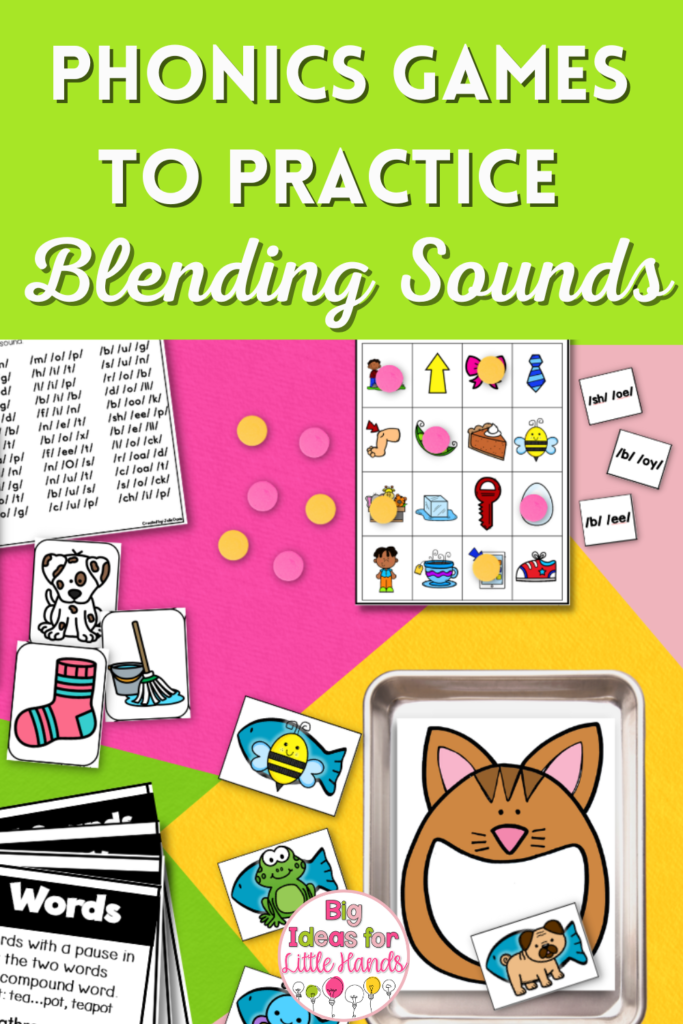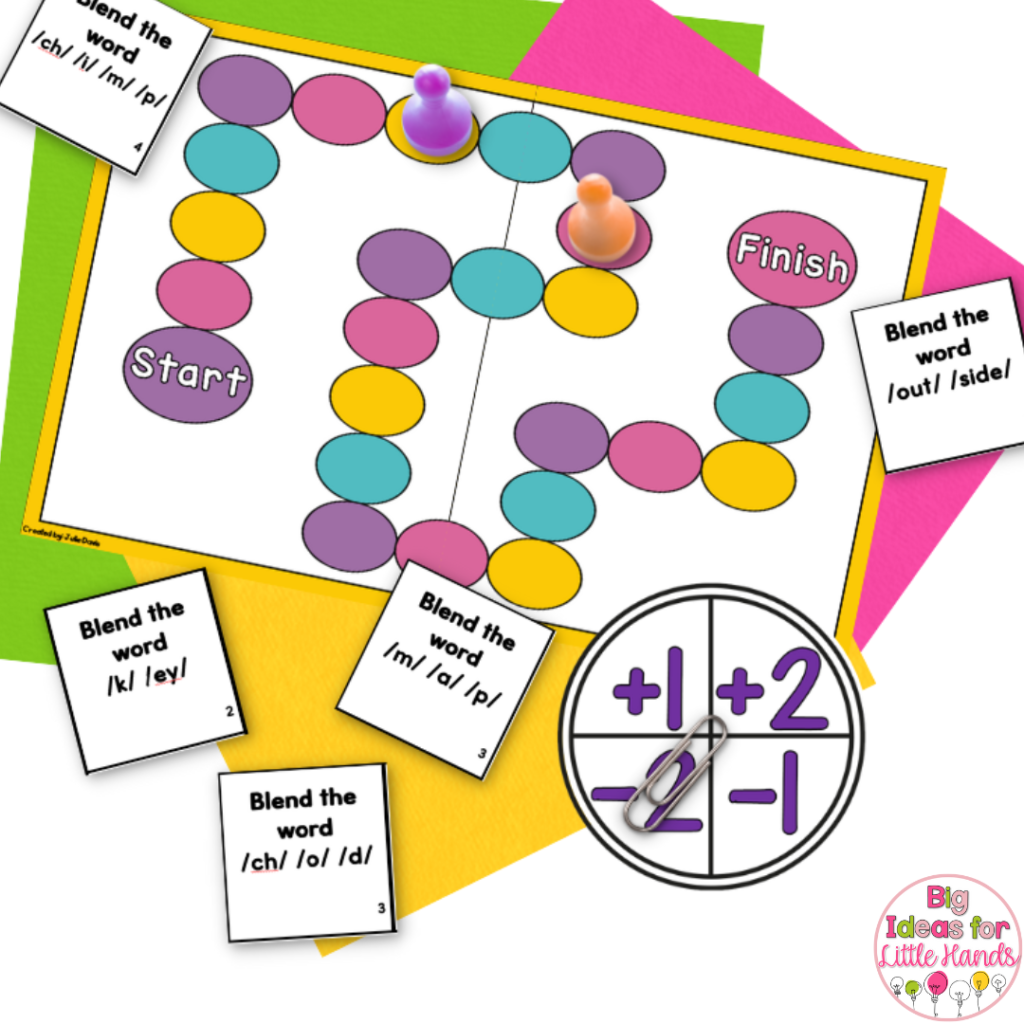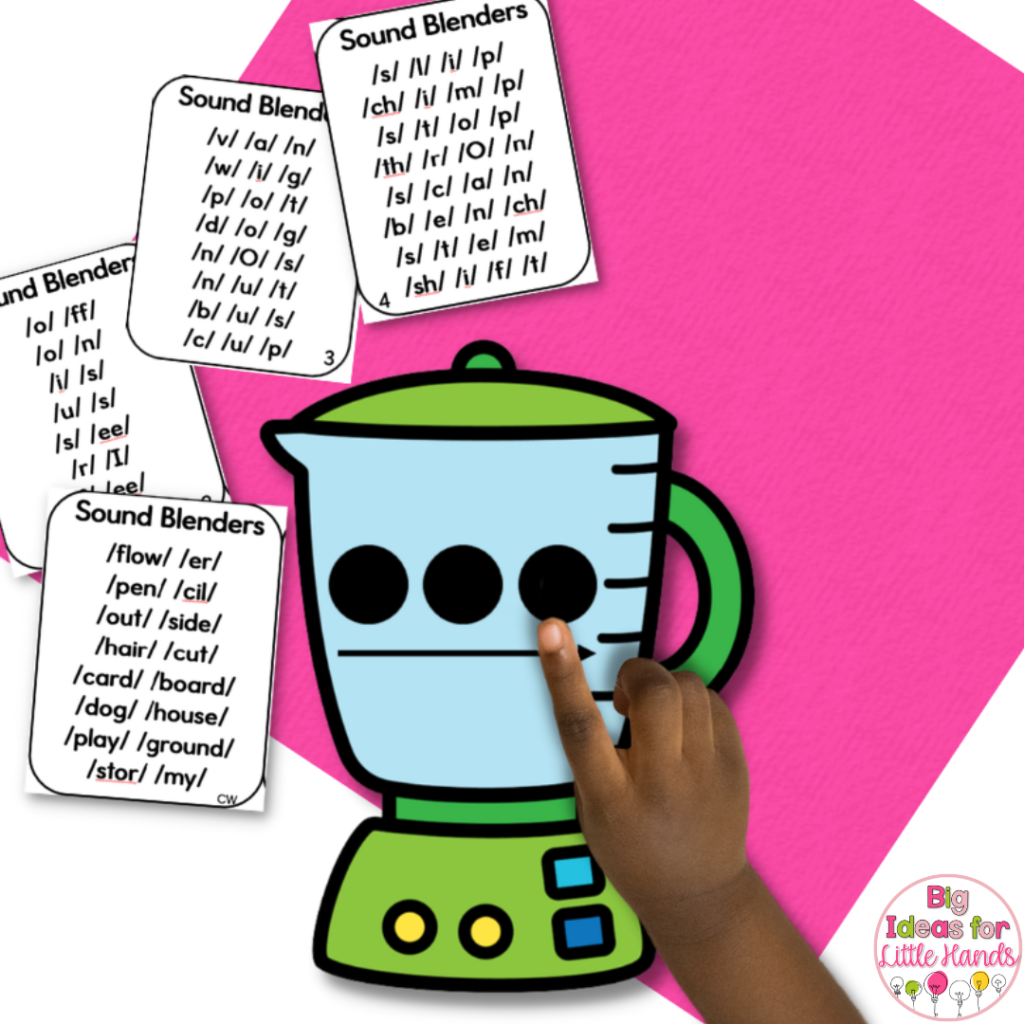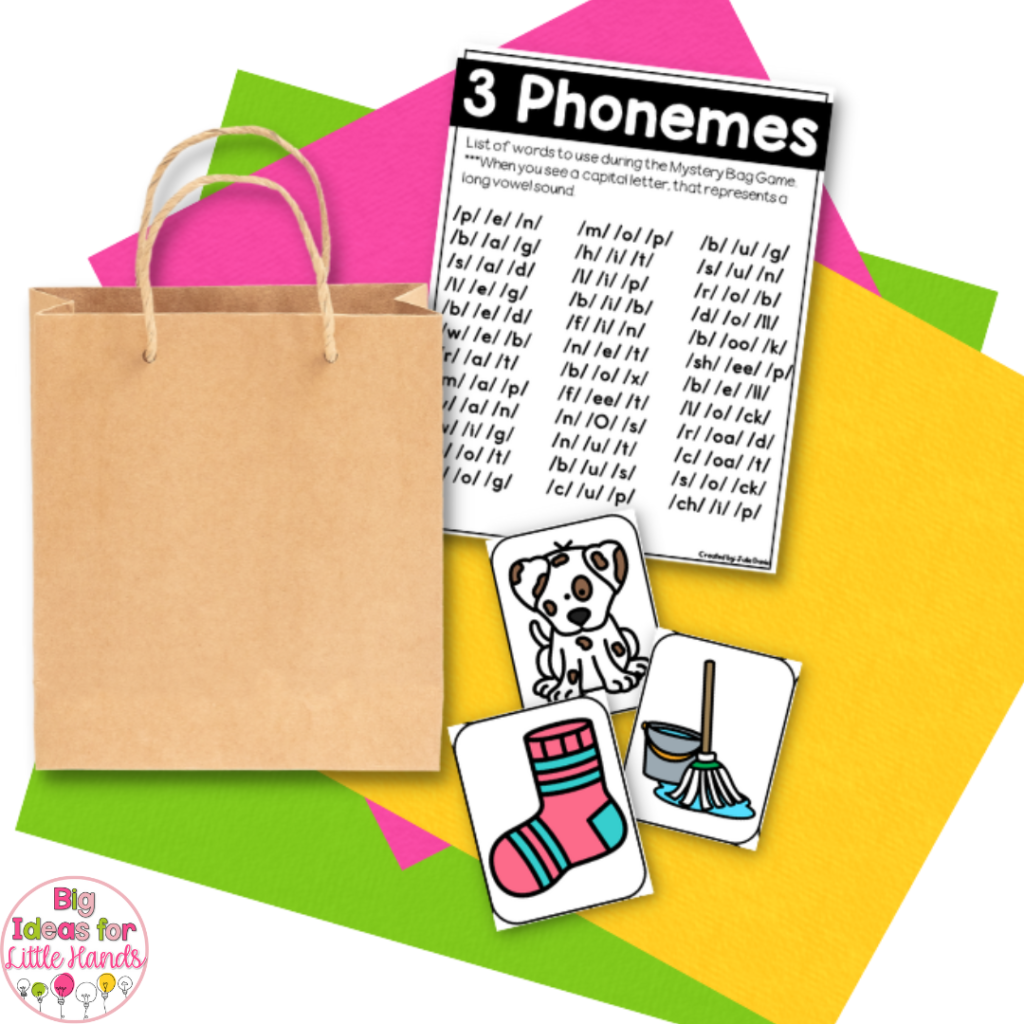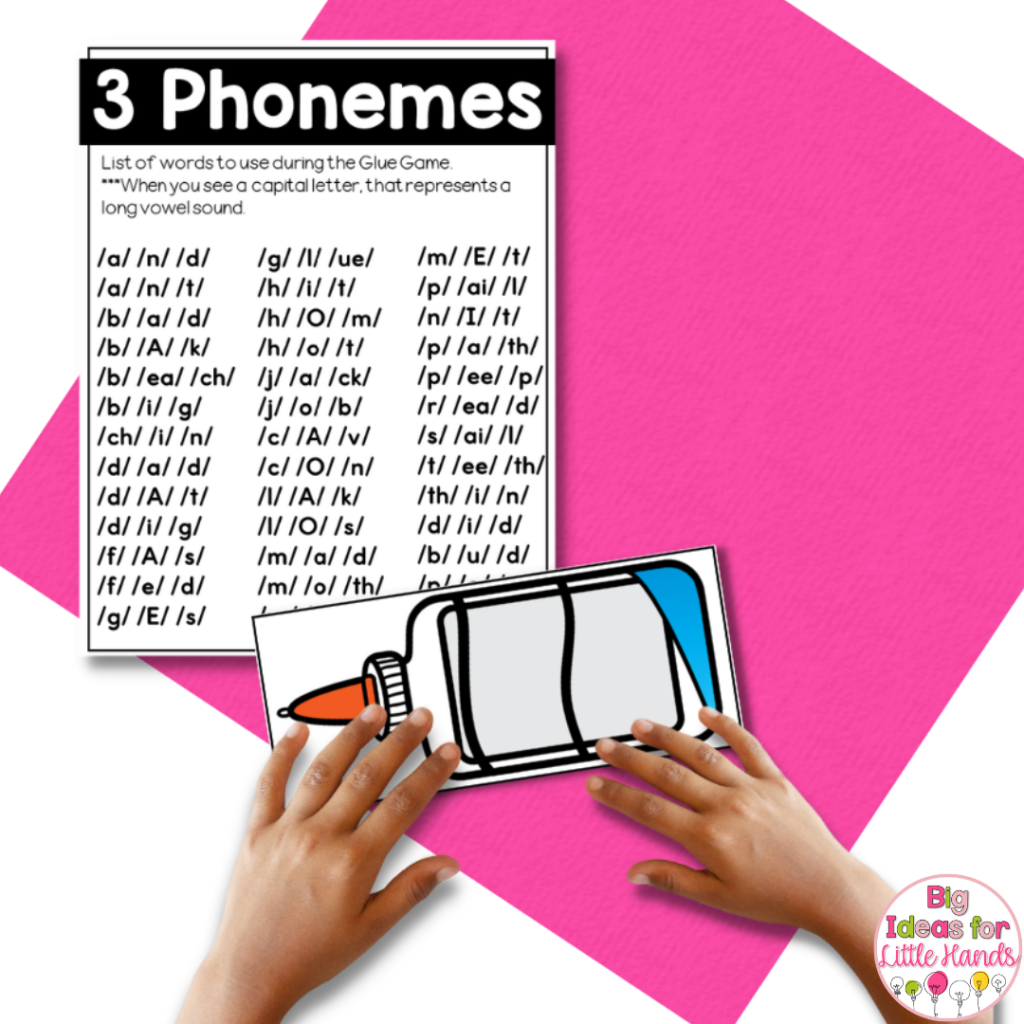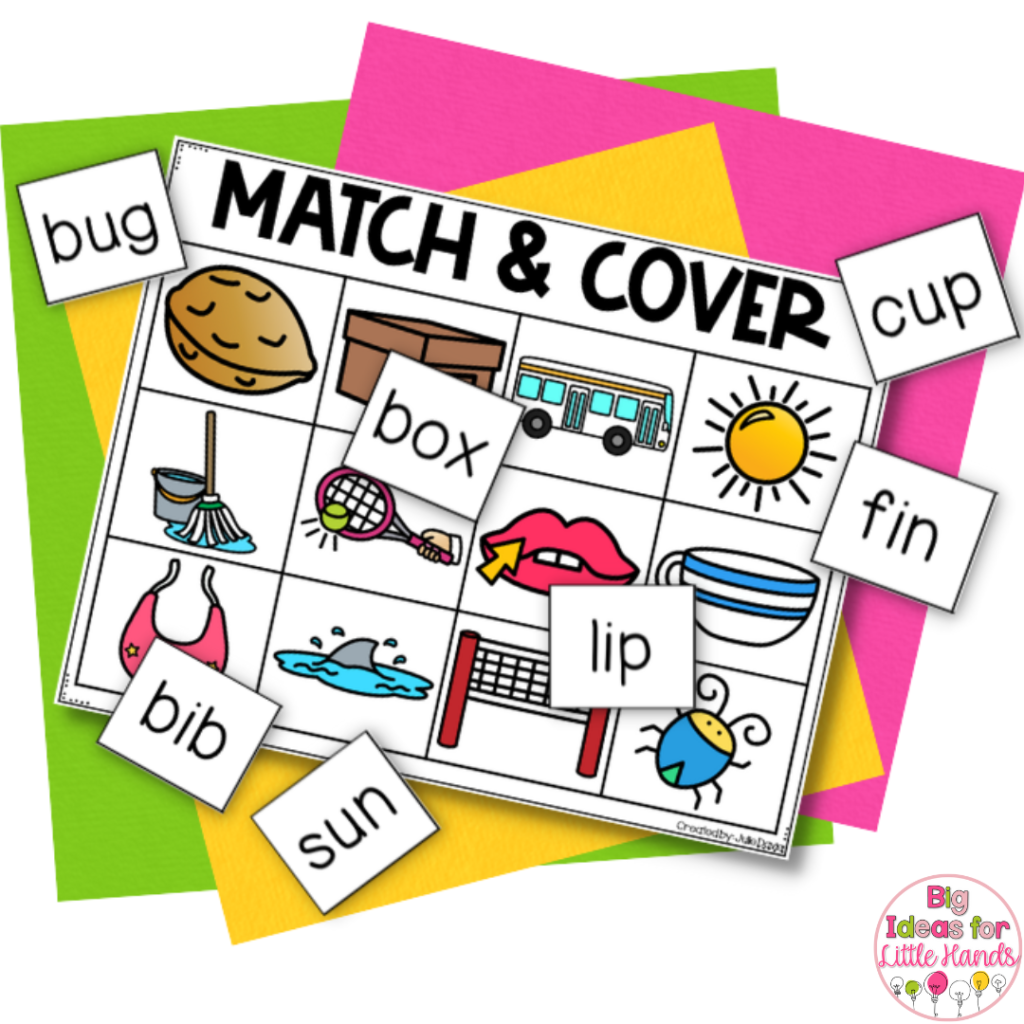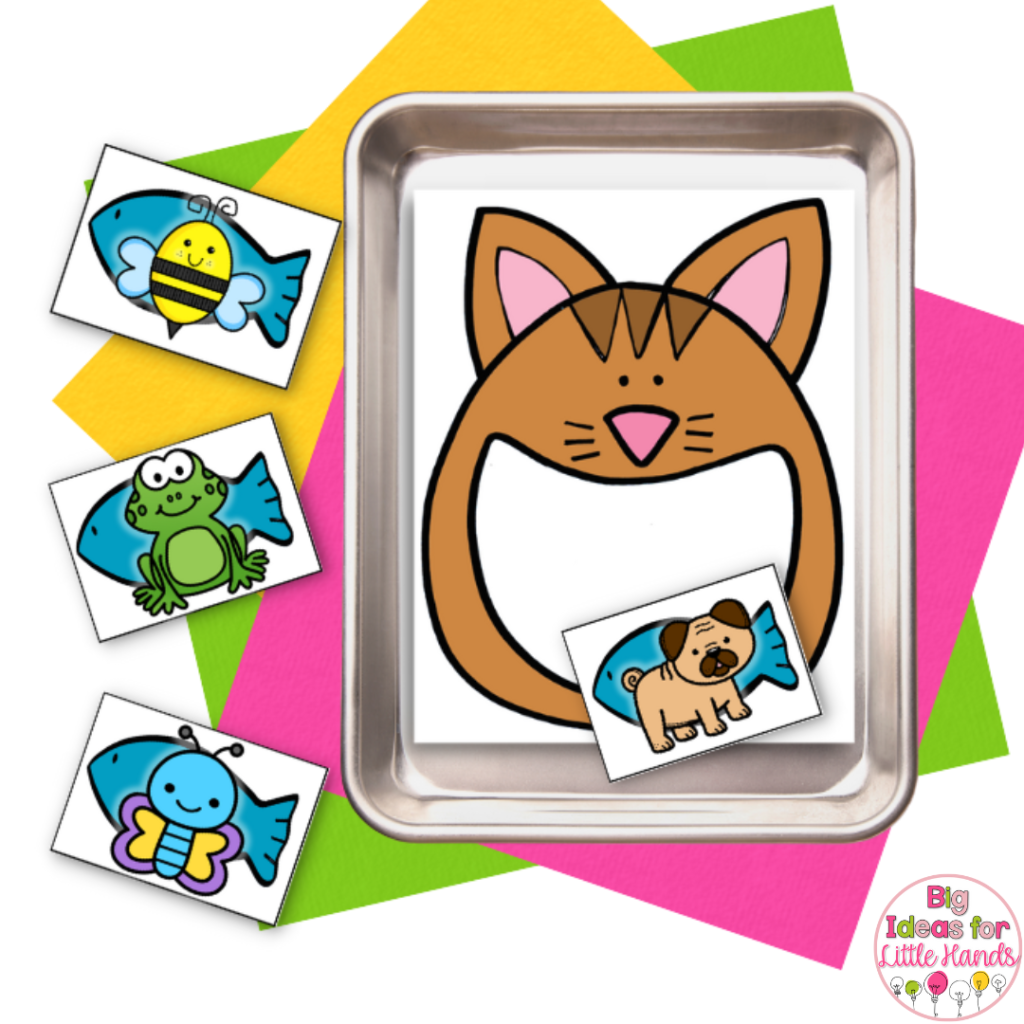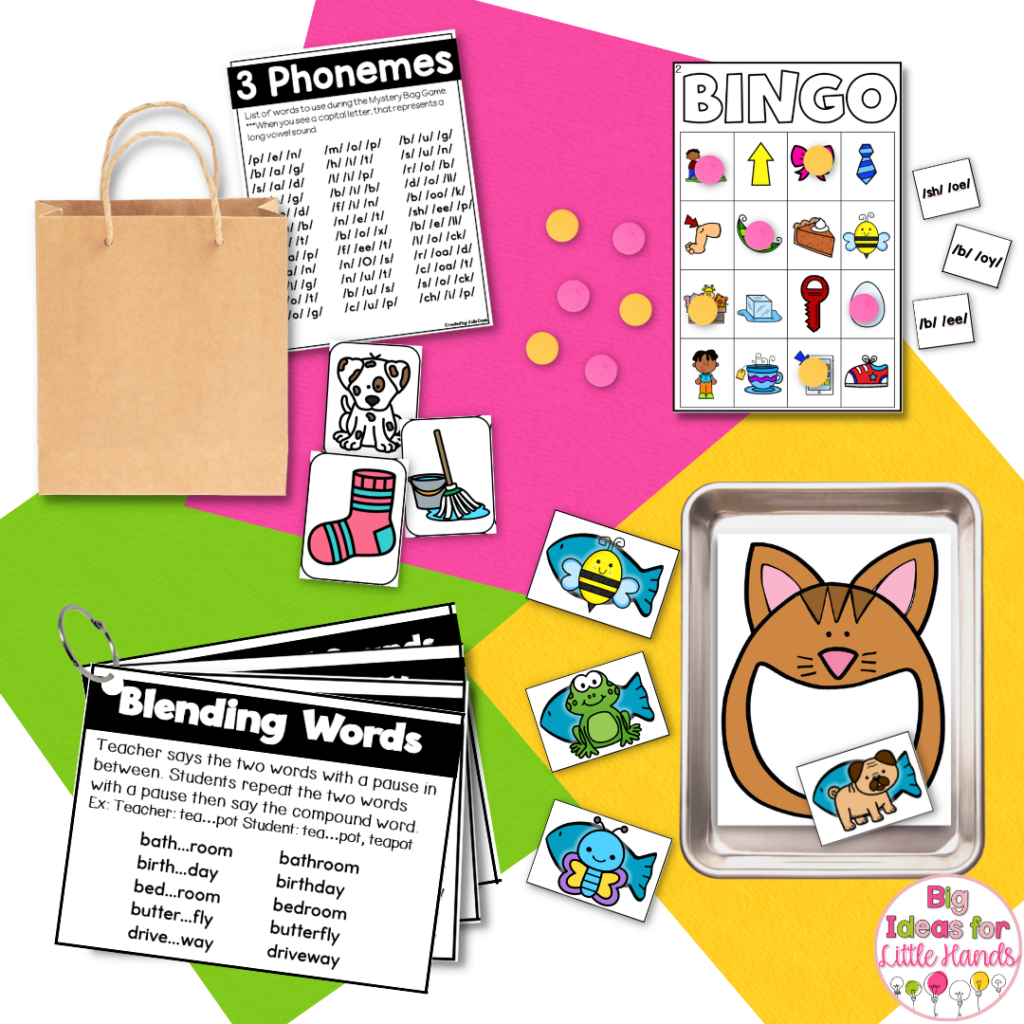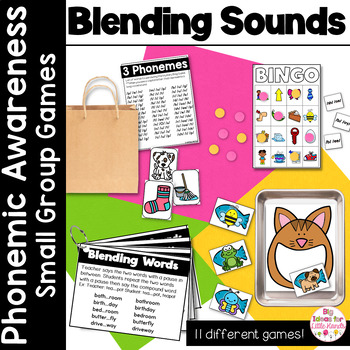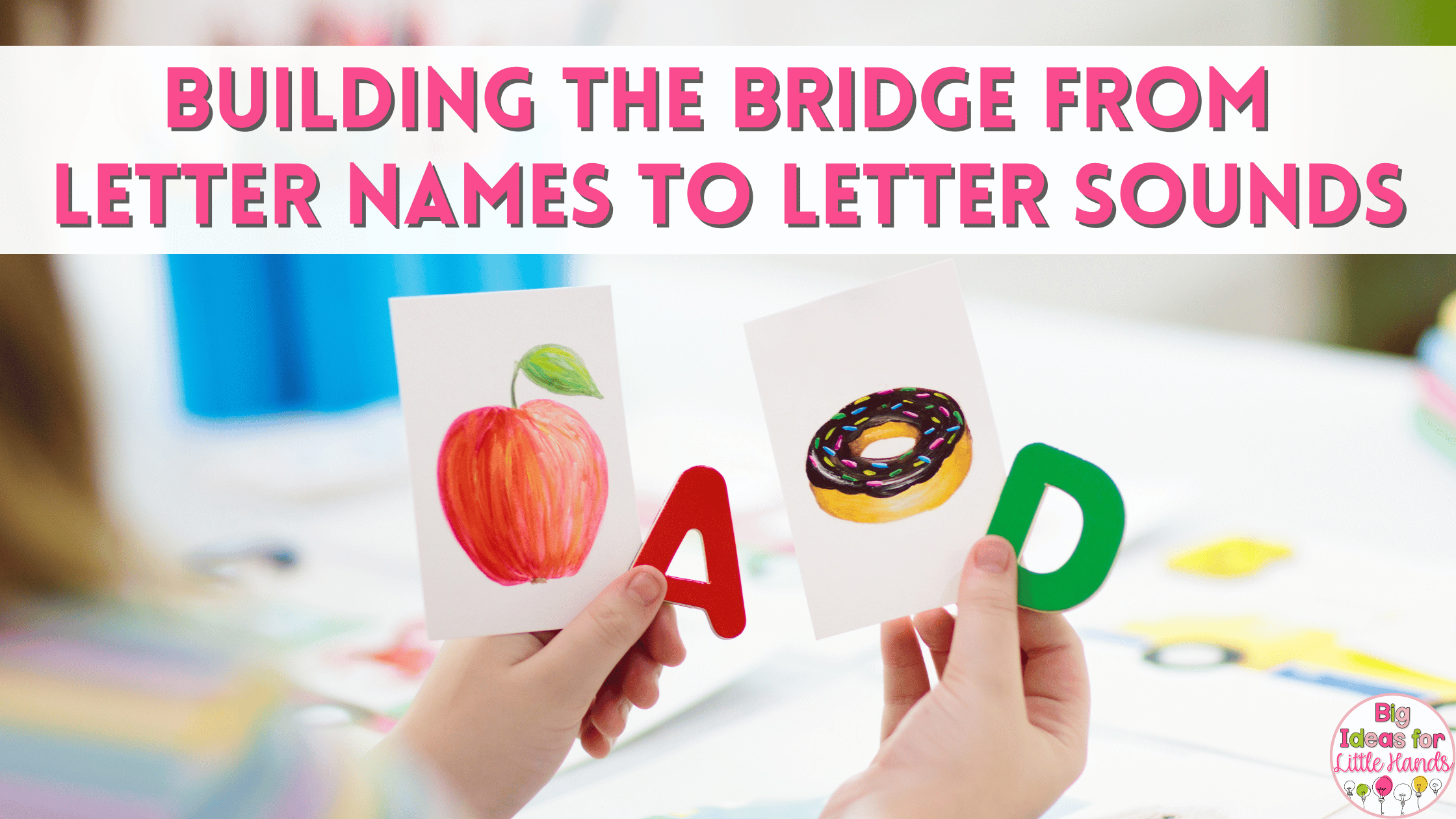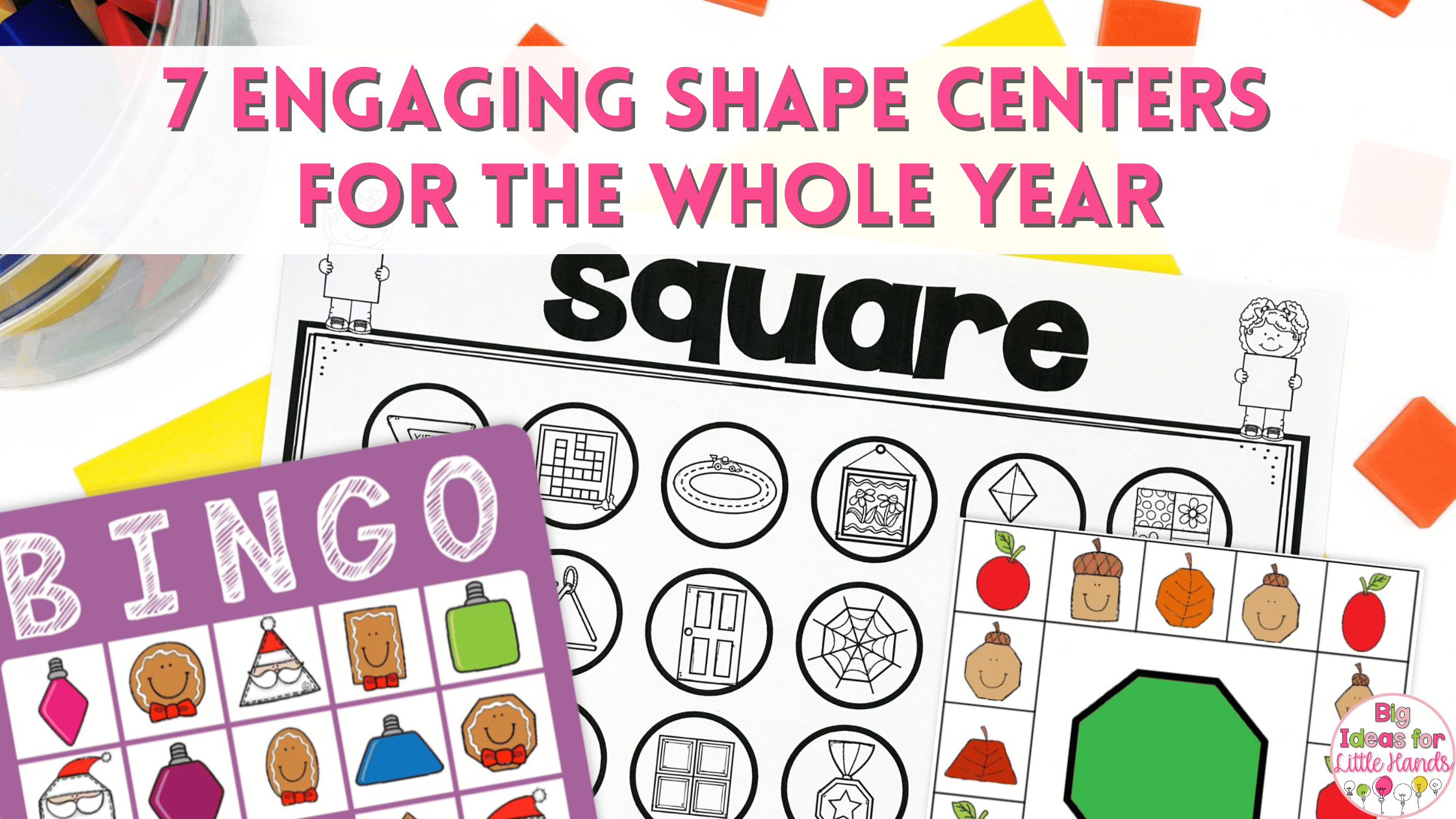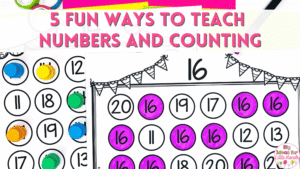Are you working with your students on phonemic awareness skills, like blending sounds? If so, I’ve got good news… phonics games will make your life SO much easier! Let’s chat about how phonics games will be a total game-changer when it comes to snagging student attention (and keeping it) while you practice blending sounds!
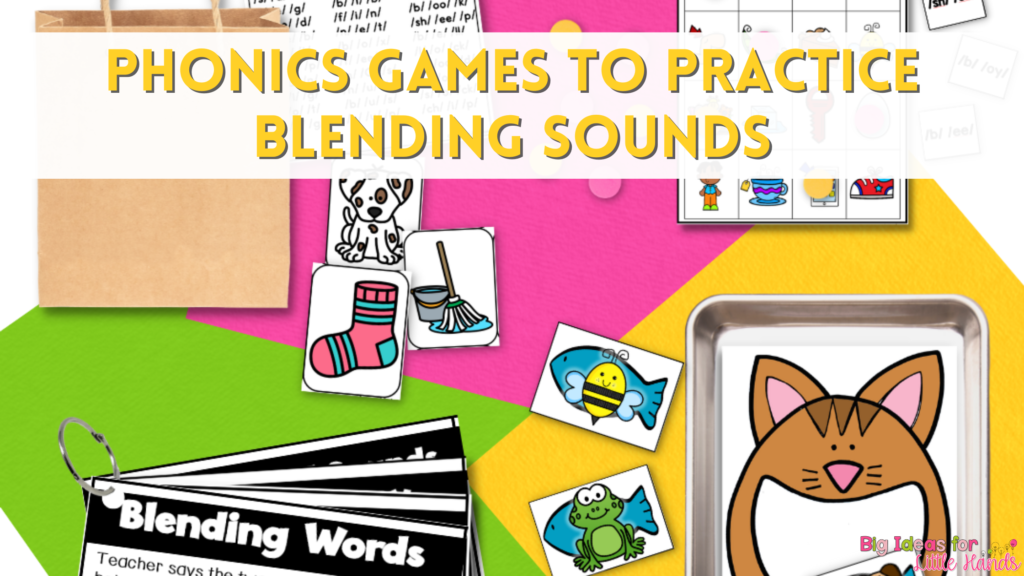
The Benefits of Using Phonics Games in Small Groups
If you teach littles, I’m sure I don’t need to convince you about the magic of using games for classroom learning. Young students LOVE to play games, which means anytime I add them to my lesson plan, I can count on full engagement from my kiddos.
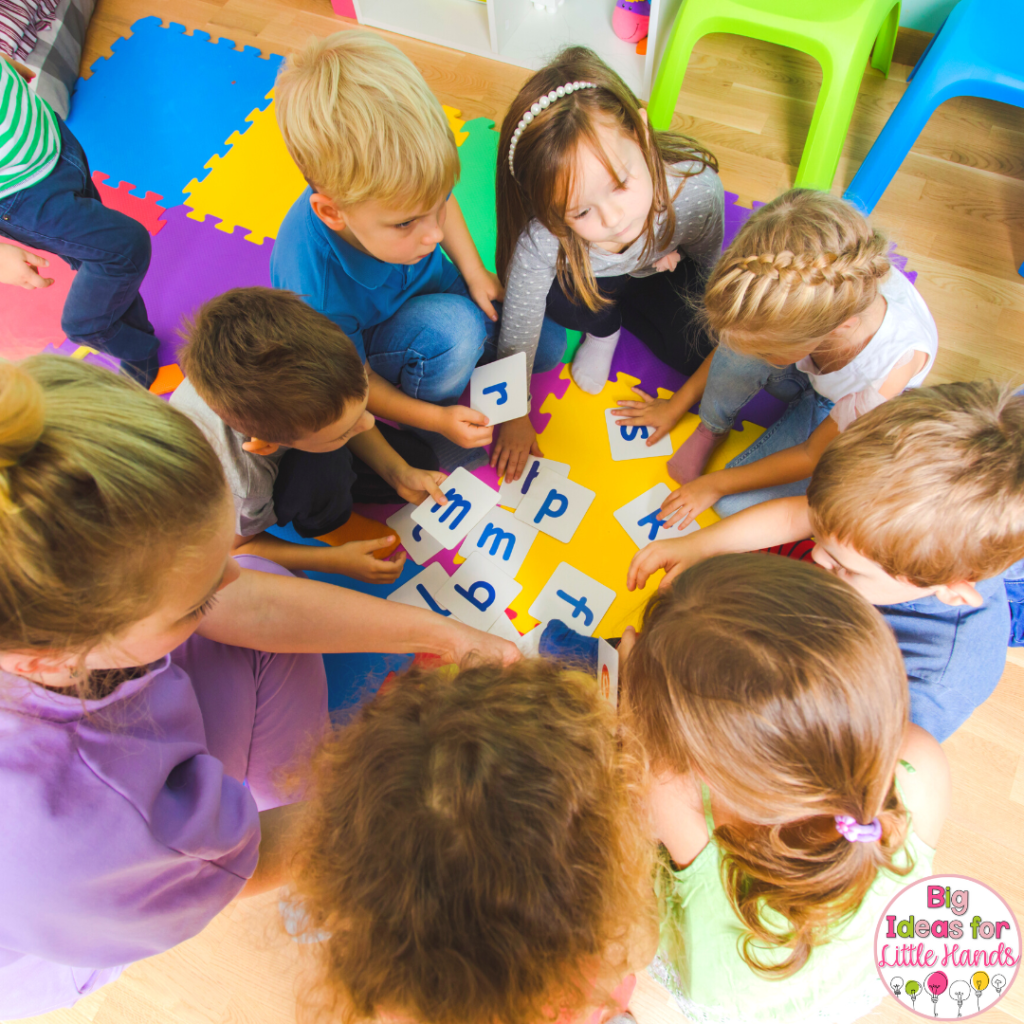
They turn whatever we’re focusing on into something exciting and captivating for my little learners. Total win as far as I’m concerned!
This comes in especially handy when it comes to skills that require a lot of repetition and practice. While the same old flashcards can get boring after a while, a game rarely loses its appeal! This is especially true in the eyes of a kindergartener.
This is great news when it comes to phonics! After all, you and I both know that mastering blending is not an easy task. It takes continued practice and exposure over time. So why not use engaging phonics games to make working with phonemes fun and easy?!
Choosing Small Group Phonics Games
When it comes to choosing phonics games for your students, there are a few things I like to keep in mind. Personally, I’m a huge fan of using phonics games in my small groups.
I think my students get the most out of them when I’m there to help facilitate. Once students get the hang of a new game, you’ll likely be able to use it in centers too, but small groups allow for a special opportunity for BIG growth in phonics!
I also love that using games in small groups means that I can easily differentiate topics for my students by skill level. Since I’m only working with one group at a time, I can also be discreet about the material each group is getting. This helps all of my students to feel included and avoid any skill-level comparisons that can occur among the kiddos.
When it comes to practicing blending sounds, I have a resource that includes 11 different games that are aligned with the science of reading. Inside this resource, you’ll find tons of games that make teaching this skill fun and easy. Plus there are multiple options included to make differentiation a breeze! Want to take a peek? Here are 5 of my favorites!
1. Blender it Up!
This is one of my all-time favorite phonics games for practicing blending sounds. My students love this one too, and it’s a great activity for students who are brand new to blending. The idea behind this game is that students will practice breaking a word down into phonemes and then blending the sounds together.
To prepare, each child gets a blender cut-out with dots on it to represent the number of phonemes in the words we’re targeting.
The teacher will use cards containing the word list. To play, the teacher will say sounds aloud for a specific word. Students will tap the dots on their blender for each sound and then blend the sounds together to make the word.
When we use this game in small groups, I like to model it first with a few words. Then, we practice as a group.
Finally, I allow kiddos to try it independently by taking turns one at a time. This game comes with words with 2, 3, and 4 phonemes as well as compound words so we’re able to play it multiple times throughout the year.
2. Mystery Bag Phonics Game
Another game we use frequently for practicing blending sounds is Mystery Bag. This game is played by filling a bag with picture cards.
The teacher will pull a card from the bag and say, “Can you guess my mystery picture?” Then the teacher will slowly say each sound in the word.
Students will listen carefully and blend the sounds together to figure out the mystery word. You can have students take turns guessing, or have the first student who guesses correctly keep the card.
This game also comes in multiple options, making differentiation easy. Simply choose the picture cards for 2, 3, or 4 phonemes for each group, depending on skill level. This game is a fantastic way to get lots of practice blending sounds in small groups, but it also works well for whole groups too! I like to keep my bag of picture cards up at the front of the room, so I can easily grab it anytime we have a few minutes to fill.
3. Glue Puzzles for Blending Sounds
This game is great for helping your students visualize each phoneme separately, and then bring them together by blending to form a word.
To start, you’ll choose if you’d like to target 2, 3, or 4 phonemes. Included in this game are glue bottle puzzles for each type along with word lists.
To play, the teacher will break a word apart by saying each sound slowly. As you do this, pull the glue bottle pieces apart to visually display each phoneme. Next, the students will repeat each sound slowly as they push the glue bottle puzzle pieces back together, beginning with the glue bottle tip.
Once the puzzle pieces are joined, they blend the sound together to form the full word. This game can easily be differentiated by group, so you’ll be able to continue challenging your littles as their skill levels grow!
4. Match and Cover
Another game I love to use in my small groups is called Match and Cover. This game is one of those that I always laminate since we tend to use it again and again throughout the year. To get started, each student gets a game board with 12 pictures on it. They will also get a stack of corresponding word cards.
To play, the students will choose a card from their stack and split the word into phonemes. They say each sound slowly and then blend the letters together to read the word. Next, they find the picture on their playing mat and cover it with the word card.
To introduce this game, I like to play with my small group using just 1 board and a set of cards. I start out by modeling how to play and then call on students to choose a card one by one. After everyone has had a chance to practice blending a couple of times, I have the kiddos play a partner game. On another day, I might have students work on filling a mat independently. I love that this game is quick and easy to prep, and can be used in a variety of ways!
5. Feed Me Phonics Games
Lastly, this one is the real MVP since it’s ALL of my students’ favorites. This game is perfect for those days when you’re struggling to keep engagement high.
In this activity, students get to “Feed the Cat” after they break apart a word and then blend the sounds together.
We play it all together in small groups and take turns going around the table. To get started, the teacher will prep the cat cut-out, along with the fish cards. When you’re ready to play, place the cat and a set of fish cards on the table.
One at a time, choose a card (without telling students which one you chose) and slowly say the sounds aloud. Then choose a student to repeat the sounds back to you and blend the letters together. Once they say the word, they find the matching fish card and feed the cat!
Phonics Games Make Learning Fun
Can you picture yourself using these games in small groups? I sure hope so! My students absolutely love practicing skills like blending sounds when we’re using engaging games like these. Some of the other fun games included in this resource are:
- Blending Sounds Bingo
- Blending Sounds Puzzle Cards
- Blending Sounds Let’s Build a Pizza
- Blending Sounds Sound Talks
- Blending Sounds SWAT and more!
There are a total of 11 games in 4 versions so you can be sure you’ll be able to target blending sounds with these phonics games for all of your little learners! Take a closer look at the full resource here to check out all the details!
Use Phonics Games All Year Long
While these phonics games are great for learning to blend sounds together, I use games all year long in my classroom to target lots of other phonics skills too. If your students aren’t quite ready for blending sounds yet, don’t worry! The options are truly endless. I’ve written quite a few posts on using games in the primary classroom to teach other phonemic awareness skills:
- Using Games To Teach Beginning Sounds
- 5 Fun Kindergarten Letter Recognition Games
- Teaching Ending Sounds with Games
- 5 Fun Games to Teach Rhyming Words
No matter what phonics skill you’re looking to target, games are a great way to help your students get excited about learning. Because that’s really the goal of a teacher, right? Helping our students see the joy that comes with learning new things is just about the best thing ever in my book!
Save This Post
This post is filled with fun ideas for phonics games to help your students master blending sounds. Save this post to keep track of these ideas!
